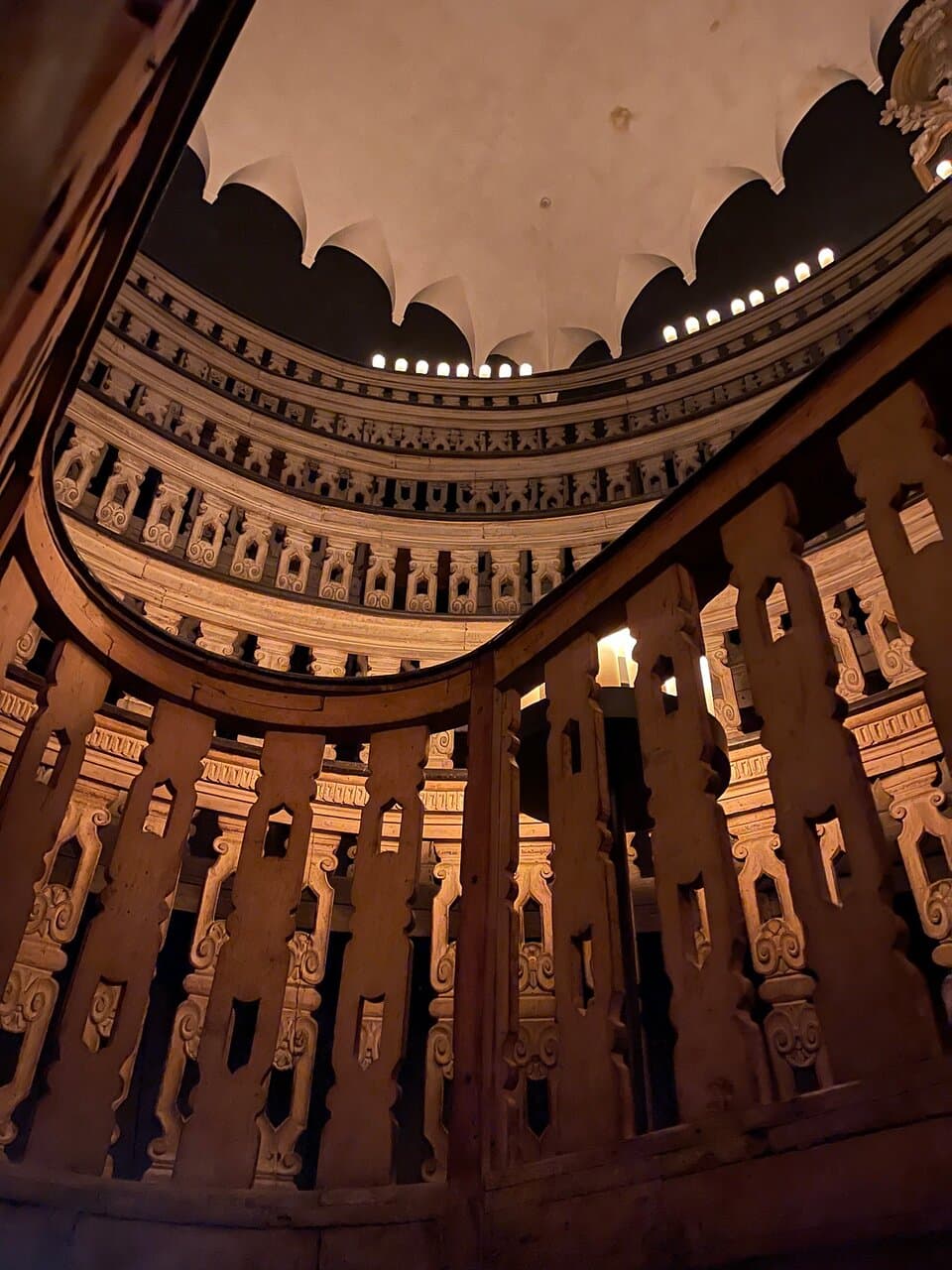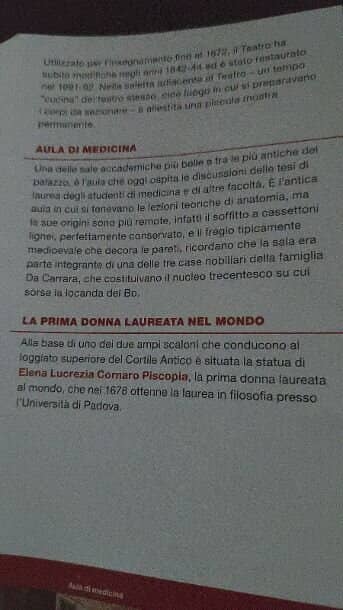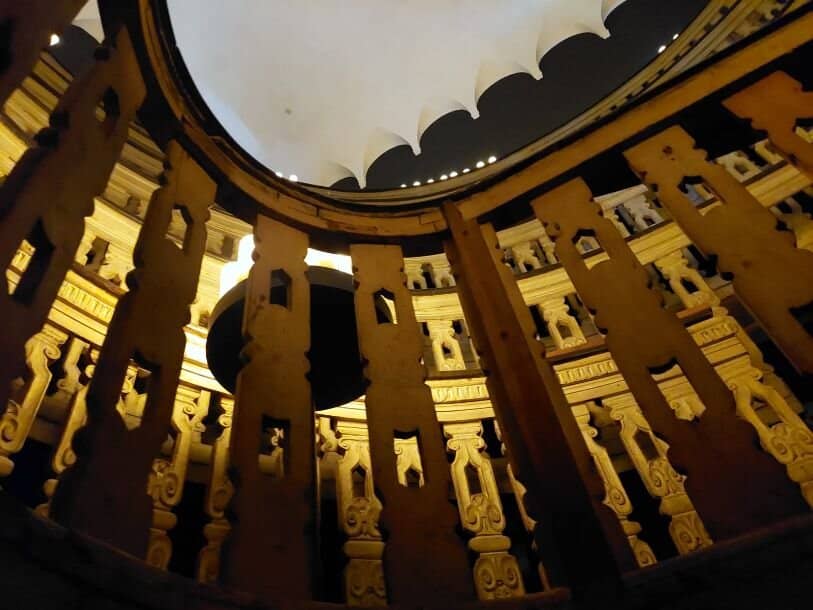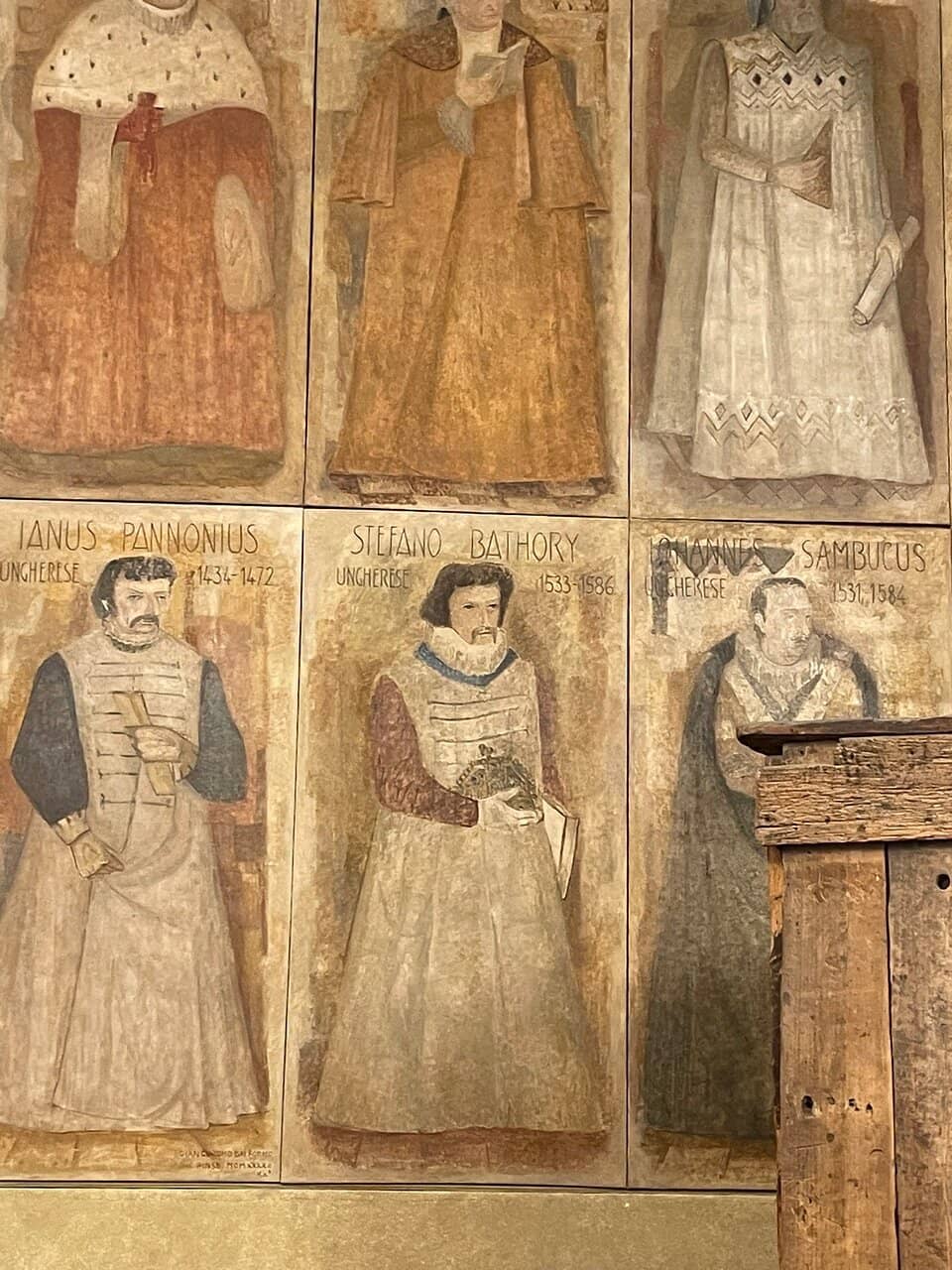
Anatomical Theatre
Step into the world's first permanent anatomical theatre, a groundbreaking 1595 structure at the University of Padua.
Highlights
Must-see attractions

Social
From TikTok & Reddit
Best Time
Fewer crowds, better focus

Anatomical Theatre
Best Time
Fewer crowds, better focus
Highlights
Must-see attractions
Step into the world's first permanent anatomical theatre, a groundbreaking 1595 structure at the University of Padua.
"A short, but well worth the visit, including seeing Galileo's lectern and the anatomical theatre."

Book Guided Tours
Access is via guided tour. Book ahead to guarantee entry and learn fascinating history! :admission_tickets:
View from Below
The theatre is viewed from the floor level where cadavers were placed. :camerawithflash:

Highlights
Discover the most iconic attractions and experiences

The World's First Anatomical Theatre
Palazzo del Bo, University of Padua
Witness the groundbreaking 1595 structure where anatomy was first taught via permanent dissection.

Galileo's Lectern
University of Padua
See the very spot where Galileo Galilei taught astronomy and physics. A true piece of scientific history.
Plans like a pro.
Thinks like you
Planning Your Visit
Book Your University Tour
Understand the Experience
Best Times
Insider Tips
from TikTok, Instagram & Reddit
Book Guided Tours
Access is via guided tour. Book ahead to guarantee entry and learn fascinating history! :admission_tickets:
View from Below
The theatre is viewed from the floor level where cadavers were placed. :camerawithflash:
Student Discounts
Tickets are affordable, with discounts for students and teachers. :moneywithwings:
Padua is Underrated
Explore Padua! It's older than Rome and rich in history. :italy:
Tips
from all over the internet
Book Guided Tours
Access is via guided tour. Book ahead to guarantee entry and learn fascinating history! :admission_tickets:
View from Below
The theatre is viewed from the floor level where cadavers were placed. :camerawithflash:
Student Discounts
Tickets are affordable, with discounts for students and teachers. :moneywithwings:
Padua is Underrated
Explore Padua! It's older than Rome and rich in history. :italy:
What Travellers Say
Reviews Summary
Visitors praise the Anatomical Theatre as a historically significant site, offering a glimpse into early medical education. The guided tours are informative, though some note the viewing perspective is limited. The affordability and the connection to figures like Galileo are frequently highlighted positives.
"The guided tour of the old University building is short, but well worth a visit, including seeing Galileo's lectern and the anatomical theatre for dissecting cadavers."
Ian Turner
"Stepping into history."
Jerry Day
"The guide speaks only English, but he gives an interesting account. Tickets are relatively cheap (discounts for students and teachers). It's an interesting place, and I highly recommend it."
Julia Wolak
What People Like
What People Dislike
Frequently Asked Questions
🚇 🗺️ Getting There
The Anatomical Theatre is located within the historic Palazzo del Bo, part of the University of Padua. You can reach Padua by train from major Italian cities like Venice or Milan. From the Padua train station, it's a pleasant walk or a short bus ride to the university district.
Yes, Padua is a very walkable city, and the main attractions, including the Anatomical Theatre, are relatively close to each other. Many visitors find it a charming and accessible city to explore on foot.
Walking is ideal for exploring the historic center. Local buses are also available for longer distances. Many visitors arrive in Padua and find they can easily access key sites without needing extensive public transport.
🎫 🎫 Tickets & Entry
Tickets for the Anatomical Theatre are typically purchased as part of a guided tour of the University of Padua's historic buildings, including the Palazzo del Bo. It's highly recommended to book these tours in advance online to secure your spot, as they can sell out.
The Anatomical Theatre is accessible only during scheduled guided tours of the University. Tour times can vary, so it's best to check the official University of Padua website or your tour provider for the most up-to-date hours.
Yes, discounts are often available for students and teachers. It's always a good idea to inquire about potential discounts when booking your tour.
No, access to the Anatomical Theatre is generally restricted to guided tours of the University of Padua. This ensures visitors receive historical context and helps manage visitor flow.
🎫 🏛️ Onsite Experience
The Anatomical Theatre is a unique, amphitheater-like structure designed for anatomical dissections. It's built of wood and features tiered seating for students to observe the procedures below.
No, dissections are no longer performed. The theatre is preserved as a historical site. Visitors view the space from the floor level where the cadavers were placed.
The guided tour that includes the Anatomical Theatre is generally described as short but informative, often lasting around an hour.
The Anatomical Theatre is part of the University of Padua's historic complex, which includes other significant areas like Galileo's lectern and beautiful courtyards.
The historical context of dissections might be sensitive for very young children. However, older children and teenagers interested in science and history often find it fascinating. Parental discretion is advised.
📸 📸 Photography
Photography is generally permitted inside the Anatomical Theatre, but it's always best to check for any specific restrictions on the day of your visit or with your tour guide.
The unique amphitheater design offers great perspectives from the lower level. Capturing the tiered seating and the central dissection area provides a strong visual.
While not always explicitly stated, it's good practice to avoid using flash photography in historical indoor spaces to protect delicate artifacts and ensure a better experience for other visitors.
For Different Travelers
Tailored advice for your travel style
👨👩👧 Families with Kids
Tip: Look for tours that highlight Galileo's work, as this is often a more universally engaging topic for younger audiences. The affordability of tickets also makes it a budget-friendly educational outing.
🎓 Students and Academics
Benefit: Take advantage of student discounts on tours. The rich historical context and the tangible links to scientific pioneers like Galileo offer invaluable insights for academic study and personal enrichment.
Deep Dives
In-depth insights and expert knowledge
The Birthplace of Modern Anatomy
The theatre's design is a marvel of its time, featuring a circular, tiered structure resembling a Roman amphitheater. This allowed approximately 250 students and professors to gather and observe the dissection of human cadavers from a safe distance. The bodies used for these dissections were often provided by judicial authorities, frequently those who had been executed, highlighting the complex ethical and societal context of early medical research.
Visiting the theatre today offers a tangible connection to this pivotal era in medical history. It's a place where groundbreaking discoveries were made, and the understanding of the human body began to evolve rapidly. The preserved structure allows us to imagine the atmosphere of intense study and discovery that once filled its wooden walls.
Galileo Galilei's Padua Legacy
Galileo's time at Padua (1592-1610) was incredibly productive. He conducted experiments, developed his telescope, and made crucial observations that challenged established astronomical views. The lectern, from which he lectured, stands as a testament to his influence on scientific thought and education.
Experiencing these historical sites within the university provides a deeper appreciation for the intellectual environment that fostered such significant scientific advancements. It connects the visitor not just to medical history but also to the broader scientific revolution that shaped the modern world.






Social
from TikTok, Instagram & Reddit